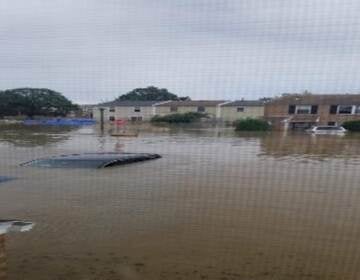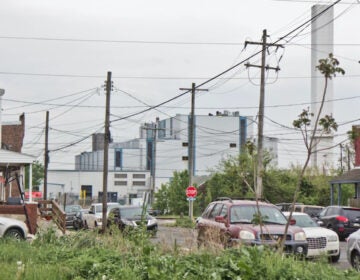New federal flood insurance pricing system brings big savings to flood-prone Eastwick
FEMA’s “Risk Rating 2.0” more accurately reflects flood risk and the cost to rebuild after a flood. This means some owners will no longer overpay.
Listen 4:08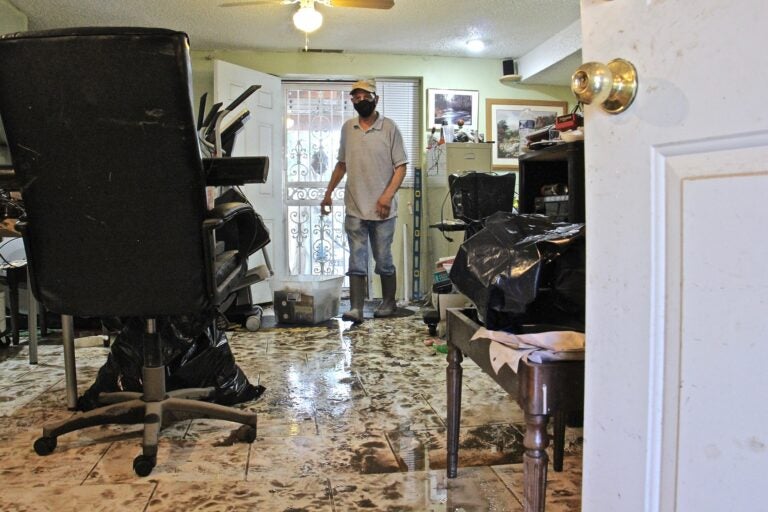
File photo: Flood water from Darby Creek rose to nearly four feet inside Leo Brundage's Eastwick home after Tropical Storm Isaias struck. (Emma Lee/WHYY)
Brenda Whitfield has learned the hard way how expensive flooding can be. In her more than 50 years living on one of the most flood-prone streets in Philadelphia’s Eastwick neighborhood, her home has been inundated three times.
“Right off the bat, it’s going to be $6,000,” she said, stirring a pot of cabbage in the kitchen of her three-story rowhouse, where the living room is already decorated lovingly for Easter and cheerful wind chimes ring outside. “The gas company is going to come and put a tag on the water heater. They’re going to put a tag on your air conditioner. … They’re going to tag everything that’s in the basement that was in the flood.”
Before switching companies recently, Whitfield’s flood insurance had crept up to around $6,500 a year — a burden for her middle-class family. Two of Whitfield’s grandchildren live with her, and she had to look for savings wherever she could.
“We didn’t buy as many clothes and stuff,” she said. “You just make do. You cut down on your food… We don’t try to go to many places with the gas and all.”
Flood insurance is a cost that comes with living in Whitfield’s neighborhood, where catastrophic floods have repeatedly devastated homes and required residents to be evacuated by boat. But many Eastwick residents should see savings under a new pricing system the National Flood Insurance Program (NFIP) is rolling out in full Friday.
The new system, known as Risk Rating 2.0, adjusts insurance premiums to more accurately reflect the actual flood risk to a given property, as well as the cost to rebuild after a flood. This means many smaller, older homes and those at lower risk of flood damage will see their premiums decrease, while many pricier, riskier homes will see costs go up.
Federal Emergency Management Agency (FEMA) data shows that in Philadelphia, premiums for more than half of all National Flood Insurance Program policies on single-family homes will stay the same or increase by up to $120 in the first year — a rate comparable to yearly increases under the old system. Premiums on 45% of single-family home policies in Philly will see immediate decreases. That’s big, since under the old system, premiums only went up. Just 3% of policies will increase in cost by more than $120 in the first year — a smaller percent than for all policies statewide.
The impact of the change is most clear in Eastwick, which contains the most NFIP policies of any city ZIP code and will see the most dramatic savings. Over 80% of single-family home policyholders in the 19153 ZIP code will see their flood insurance rates go down in the first year of the new system, according to FEMA data. What’s more, over 42% of Eastwick single-family policyholders should see their rates decrease substantially — by at least $1,200 in the first year.
Some homeowners may have already gotten these savings, as Risk Rating 2.0 went into effect for new policies in October, and policyholders eligible for renewals since then have been able to take advantage of premium decreases. The change goes into effect for the rest of existing policies when they renew after April 1.
Making flood insurance fair
FEMA, which manages the National Flood Insurance Program, says the new pricing system is more equitable than the old one.
“We are looking to make sure that all customers get the lowest premium, the fairest premium that would apply to them,” said Rich Sobota, senior insurance specialist at FEMA.
The agency admits that historically, policyholders with lower-valued homes paid more than their share of the risk, while those with higher-valued homes paid less. That’s because the old pricing system was based on broad zones of flood risk and a property’s elevation, and did not consider costs to rebuild. The same flood that hits two homes will cause pricier damage to the larger, more expensive one — and result in a bigger insurance claim.
“[A] lower replacement cost value means that we are likely to pay less if there is a loss than if the structure has a higher replacement cost value, newer structure, newer finishes, perhaps more expensive finishes,” Sobota said.
Risk Rating 2.0 incorporates other new variables into its premium pricing as well, like flood frequency, multiple flood types, and a home’s distance to a water source.
Saleem Chapman, the city of Philadelphia’s chief resilience officer, is a fan of the pricing revamp.
“This is building more equity into the system,” he said. “You are leveling it out and you actually are creating a financial disincentive for building in, sort of, high-risk areas.”
The average home value in Eastwick’s ZIP code is $229,000, lower than the nationwide average of $331,000 and a hair above the citywide average of $227,000, according to the real estate website Zillow.
Initially, few Philly policyholders will see big premium hikes under the new system. But the ZIP code where the most homeowners will see increases of more than $120 in the first year is 19103, which covers Logan Square, Rittenhouse Square and other areas of Center City West between Love Park and the Schuylkill River. The average home price there is $488,000 — more than double that of Eastwick. While most policies in 19103 will remain relatively stable, premiums for 14 policies there will go up in excess of $120 the first year — some of them by much more.
FEMA’s flood insurance pricing revamp could be a win for not just economic equity, but also racial equity (it’s hard to know for sure, as officials say FEMA does not track the race of policyholders). FEMA admits that lower-valued homes have historically subsidized the flood insurance of pricier homes. But an NPR analysis of flood risk data from the nonprofit First Street Foundation last year found that families who got the best deals on flood insurance lived in communities that are not only richer, but also whiter. Center City West is majority-white, while Eastwick, where many premiums will decrease under Risk Rating 2.0, is majority-Black.
“When we think about our most flood-vulnerable communities, and a community that has continually found itself resisting and persisting against environmental injustice, that’s a positive development,” Chapman said.
The change could make flood insurance more accessible
In a neighborhood like Eastwick, flood insurance is essential.
“It’s vital,” said Ted Pickett, board chair of Eastwick United CDC and a leader of the EPA-sponsored Eastwick Lower Darby Creek Area community advisory group. “We must have it.”
Flood insurance is required for homes inside FEMA’s high-risk flood zone with a federally backed mortgage, but flood damage is also possible outside of this mandatory coverage zone. And high-risk homes without mortgages — for example, those passed down in a family — may not be insured.
That’s the case for Phyllis Glenn, a retiree who lives in a home on a flood-prone street in Eastwick that once belonged to her parents. Like her neighbor Brenda Whitfield, Glenn’s home has flooded multiple times. The most recent was during Hurricane Isaias.
“The whole basement [was flooded],” she said. “Our basement was a finished living room. Furniture, TV, stereo system, the whole thing. I lost washer, dryer, gas heater, water heater — everything down there.”
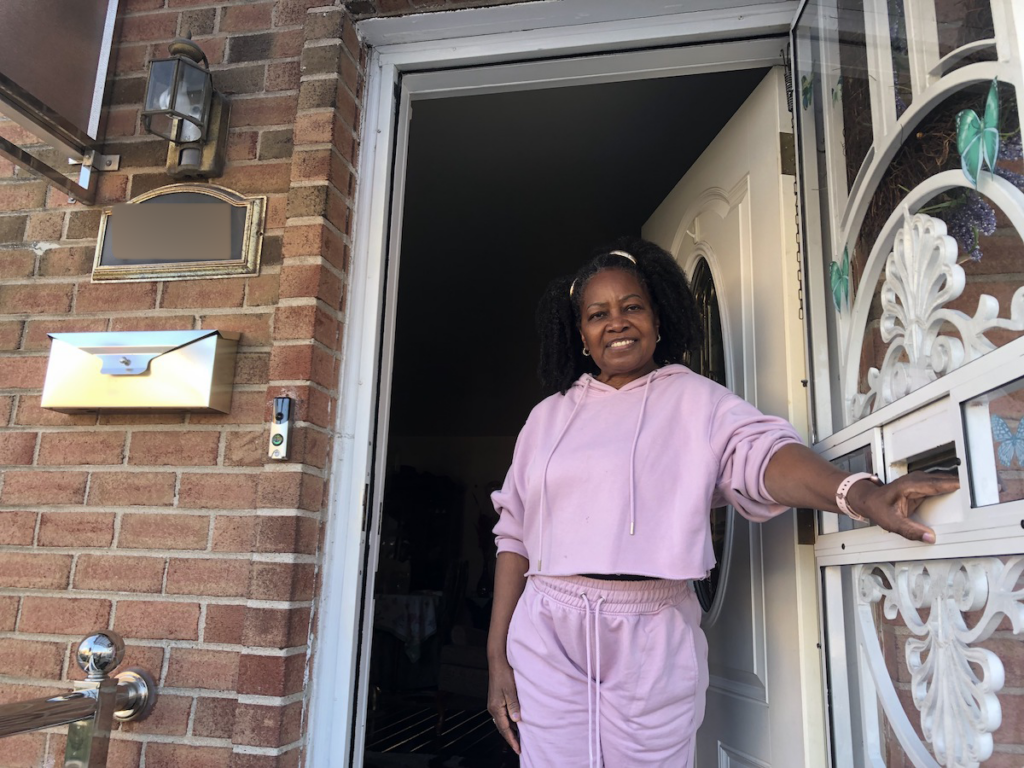
But Glenn does not have flood insurance. She wants it, but on her fixed income, she can’t afford it.
“It’s just me here, and it’s too expensive for me,” she said.
According to Pickett, who has lived in the neighborhood for four decades, been flooded four times, and has flood insurance, it’s likely Glenn is not alone.
“There may be 10, 15% of the people in this particular area who may not have flood insurance, who may not be able to afford it,” Pickett said. “That’s just a guesstimate.”
FEMA officials say the pricing revamp should make insurance more affordable to many Americans. That’s good for boosting resilience, as climate change increases the threat of costly flooding disasters.
“Insurance, it’s a major piece in recovery,” said Nick Morici, a spokesperson for FEMA. “How do you make people more resilient? How do we make things like insurance more affordable so they can recover more in a timely manner?”
There are ways that homeowners and local governments can reduce flood insurance costs further — from participating in FEMA’s Community Rating System and securing discounts for residents, to raising utilities off the floor or tiling a basement, like Glenn’s parents did. FEMA officials recommend anyone with a flood insurance policy communicate often with their insurance provider, to see if there are ways they can save.
In Eastwick, community leaders are continuing their long struggle for bigger solutions, like a levee to protect the neighborhood from flooding or a plan to relocate some residents within the neighborhood. To Pickett, making flood insurance more equitable and more affordable is only one part of the solution. Mitigating the flooding is his north star.
“That’s the goal for this community,” he said.
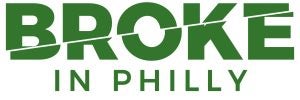 WHYY is one of over 20 news organizations producing Broke in Philly, a collaborative reporting project on solutions to poverty and the city’s push towards economic justice. Follow us at @BrokeInPhilly.
WHYY is one of over 20 news organizations producing Broke in Philly, a collaborative reporting project on solutions to poverty and the city’s push towards economic justice. Follow us at @BrokeInPhilly. 
Subscribe to PlanPhilly
WHYY is your source for fact-based, in-depth journalism and information. As a nonprofit organization, we rely on financial support from readers like you. Please give today.




